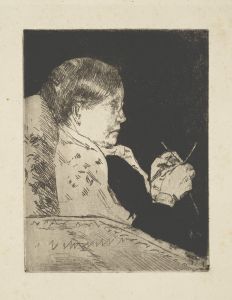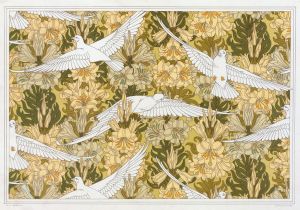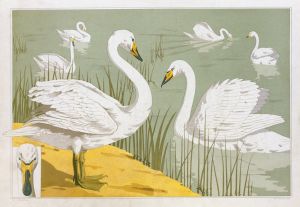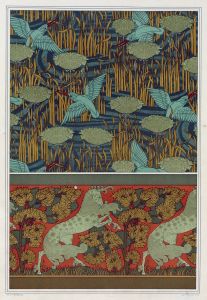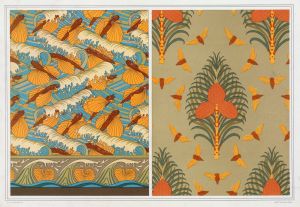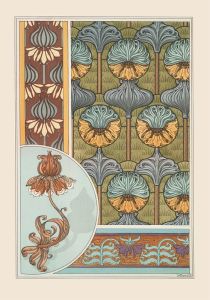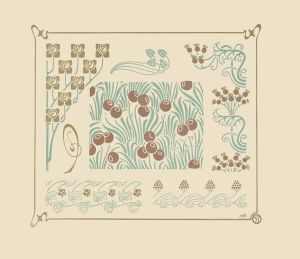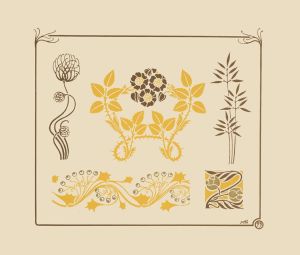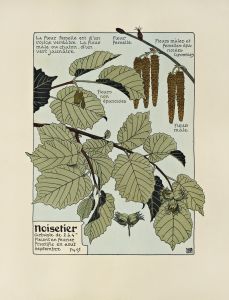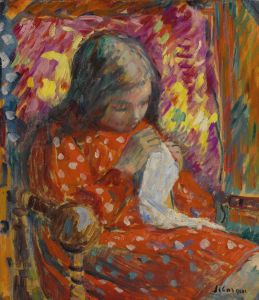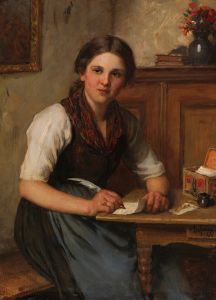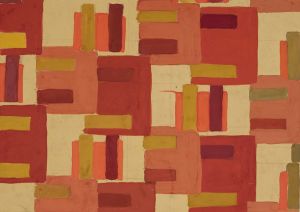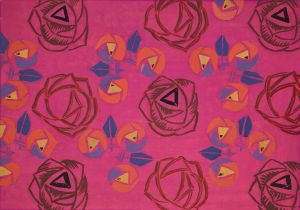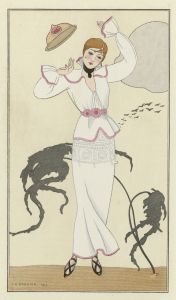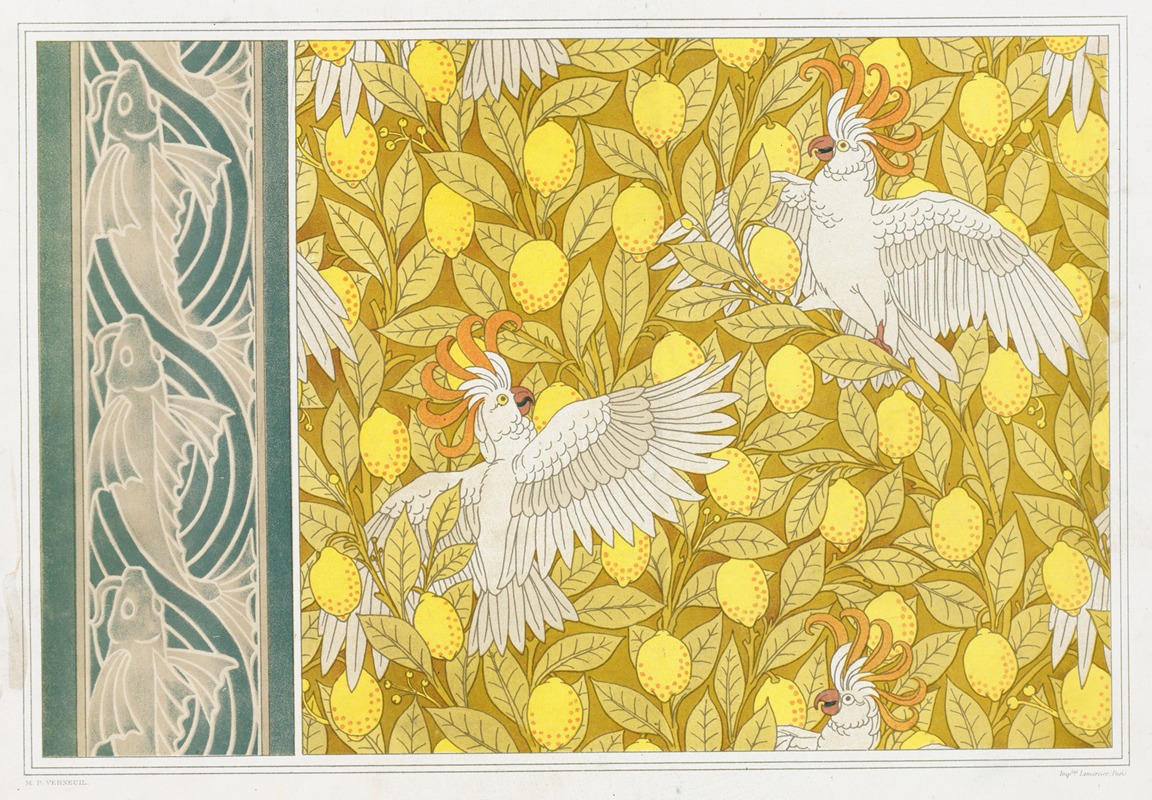
Poissons, frise au pochoir. Cacatoës et citrons, cretonne.
A hand-painted replica of Maurice Pillard Verneuil’s masterpiece Poissons, frise au pochoir. Cacatoës et citrons, cretonne., meticulously crafted by professional artists to capture the true essence of the original. Each piece is created with museum-quality canvas and rare mineral pigments, carefully painted by experienced artists with delicate brushstrokes and rich, layered colors to perfectly recreate the texture of the original artwork. Unlike machine-printed reproductions, this hand-painted version brings the painting to life, infused with the artist’s emotions and skill in every stroke. Whether for personal collection or home decoration, it instantly elevates the artistic atmosphere of any space.
Maurice Pillard Verneuil was a prominent French artist and designer known for his contributions to the Art Nouveau movement. Born in 1869, Verneuil's work was characterized by its intricate patterns and vibrant use of color, often drawing inspiration from nature. He was particularly noted for his designs in wallpaper, textiles, and ceramics, which often featured stylized floral and animal motifs.
"Poissons, frise au pochoir. Cacatoës et citrons, cretonne" is one of Verneuil's works that exemplifies his distinctive style. The title, which translates to "Fish, stencil frieze. Cockatoos and lemons, cretonne," suggests a composition that combines marine life with avian and botanical elements, rendered in a decorative manner. The use of the word "cretonne" indicates that the design was intended for a type of heavy fabric, often used in upholstery or drapery, which was popular during the late 19th and early 20th centuries.
Verneuil was known for his mastery of the pochoir technique, a method of hand-stenciling that allowed for the creation of vivid and precise color patterns. This technique was particularly popular in the production of luxury art books and high-quality prints during the Art Nouveau period. The "frise au pochoir" in the title suggests that this work was created using such a technique, resulting in a decorative frieze that could be used as a repeating border or pattern.
The inclusion of diverse elements such as fish, cockatoos, and lemons reflects Verneuil's fascination with the natural world and his ability to blend different motifs into harmonious compositions. This approach was typical of the Art Nouveau style, which sought to break down the barriers between fine arts and applied arts, integrating artistic design into everyday objects and environments.
Verneuil's work was part of a broader movement that sought to bring art into daily life, challenging the traditional separation between art and utility. His designs were not only aesthetically pleasing but also functional, intended to enhance the beauty of interior spaces. This philosophy was central to the Art Nouveau movement, which emphasized the unity of art and design.
Throughout his career, Verneuil collaborated with other artists and designers, contributing to various publications and exhibitions that showcased the Art Nouveau style. His work was widely recognized for its innovation and artistic merit, influencing subsequent generations of designers.
In summary, "Poissons, frise au pochoir. Cacatoës et citrons, cretonne" is a testament to Maurice Pillard Verneuil's skill as a designer and his contribution to the Art Nouveau movement. Through his use of the pochoir technique and his ability to blend natural motifs into cohesive designs, Verneuil created works that were both beautiful and functional, embodying the ideals of the movement. His legacy continues to be celebrated for its impact on the decorative arts and its role in shaping modern design aesthetics.





